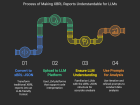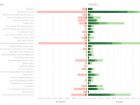
Beyond the Hype: How Structured Data Can Save AI Financial Analysis
XBRL International CEO John Turner on the need for digital analytics to be grounded in traceable, high quality, digital data. AI is coming for financial analysis, and it’s coming fast. Will that mean actionable insights or a hot mess of guesswork and hallucinations – and how do we know? In the last couple of weeks […]














